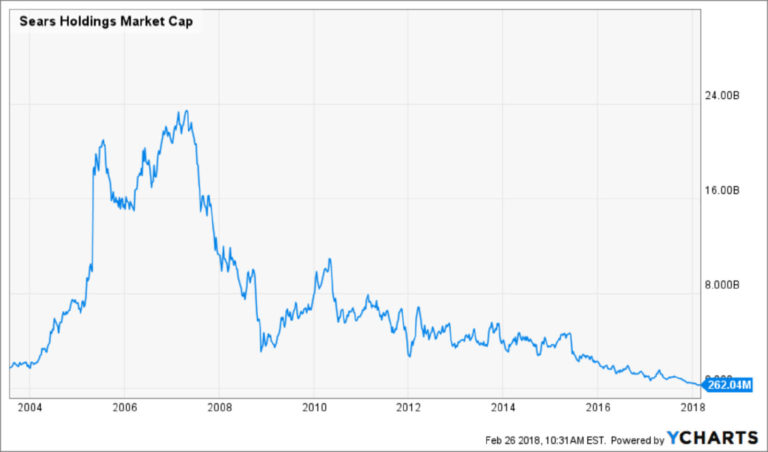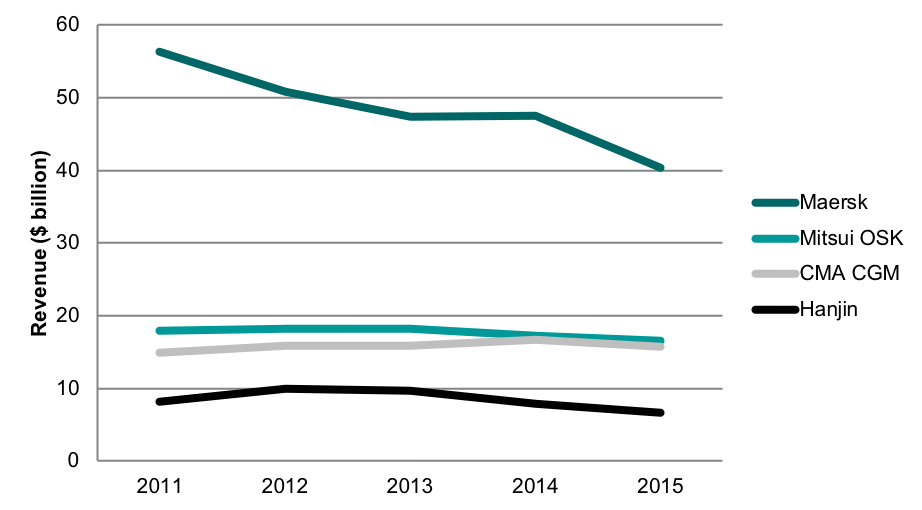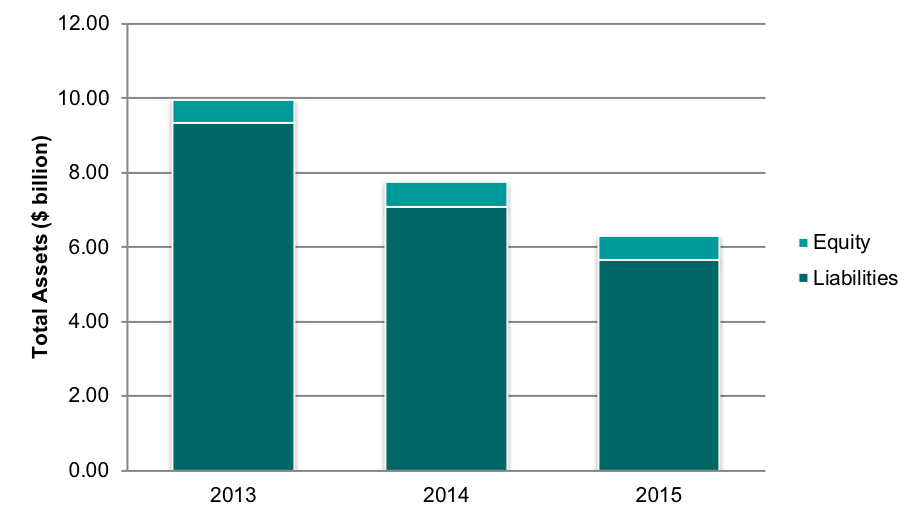In today’s markets, protecting your business is just as essential as growing it. Competitive attacks are frequent and come from diverse sources, including direct and indirect competitors, global players, niche players, and start-ups with new business models. The net effect is a threat to the stability of the business resulting in losses of market share and profitability.
WHY DEFENSIVE STRATEGY MATTERS
The objective of a defensive business strategy is to fend off aggressive attacks. If you don’t have a defensive strategy or if you fail to stop an attack, you incur a substantial problem because you put your business at risk.
The consequences of a failed defensive strategy are much more severe than a failed growth strategy. When you fail a growth initiative, you miss your target. The result might be to earn smaller profits than expected, a missed market opportunity, lower growth, and the opportunity cost of the project. These setbacks can be considerable, but in the end, you take a loss, and the business core survives.
The stakes are much more significant when it comes to defending your business. When you fail a defensive strategy, the issue is no longer one of thinner profit margins or lower growth than expected. At this point, the company faces market share erosion, customer defections, price cuts, supply constraints, and even disruption of the business model in the worse cases.
WHAT IT REQUIRES
When the firm comes under attack, management needs to leverage the right strategic control points, and formulate an effective response. Strategic control points are the mechanisms that protect the company’s market position and the ultimate profit streams against erosion from competitors, customer power, and supplier power. Strategic control points come in many forms. Examples include exploiting market dominance in attractive segments, locking up supply channels, exercising price leadership, owning crucial technology, holding essential patents, capitalizing on economies of scale, leveraging experience curve effects, and many more. For more information, see our article “Defensive Strategy: Why Strategic Control Points Count.” The essence is that you need at least two strategic control points in your industry to protect your firm.
We examine the cases of Sears Holding and Hanjin Shipping, two companies that failed to respond appropriately to competitor attack and the consequences they suffered.
Attacking instead of Defending
A great offense is not the best defense. Sears Holding is a case in point.
CASE: Sears Holdings
Sears Holdings was formed in March 2005 by combining Sears, Roebuck & Co.and Kmart Holding Corporation. The merger was premised on (1) projected revenue synergies of $200 million per year based on cross-selling opportunities, and (2) expected cost savings of $300 million per year in supply chain and administrative overhead. Sears Holdings owned Sears and Kmart stores, and valuable household product brands like Kenmore, Craftsman, and DieHard. Historically, Sears and Kmart stores had been losing market share to Walmart and Target.
Walmart’s competed on the following set of strategic control points in the retail industry:
- Inventory management technology – advanced just-in-time inventory management is at the core of Walmart’s leadership in the retail industry
- Continuous improvement – Walmart keeps improving and innovating its inventory management methods and strategies.
- Low-price provider – Walmart is able to offer low prices to customers attracted by the discount theme of the retailer. Its pricing power owes to its cost leadership.
- Cost leadership – a result of many factors, including just-in-time inventory replenishment, economies of scope and scale, store location, and negotiating power with suppliers.
Target competed on a different set of strategic control points in the same industry:
- Product differentiation – Target’s products are viewed as high-quality, fashionably differentiated merchandise
- Loyal customer base – Target’s urban customers are attracted by the product choice and pleasant shopping experience
- Logistics and inventory management – Target has a superior supply management system that runs efficiently
- Continuous improvement – its inventory turnover ratio continues to improve along with the cash conversion cycle.
Sears chose to attack. It went against Walmart and Target directly, focusing on store format and location. In early 2005, the company launched a new off-the-mall concept named Sears Essential: a mid-sized store format to offer product categories that are integral to home and family life. The store concept failed.
In 2006, the firm ditched the Sears Essential concept and launched the Sears Grand. This store format was a solutions-based destination, designed for a fun new shopping experience that the whole family could enjoy, inspiring customers with complete solutions for their everyday lives. The Sears Grand format countered Target directly in its territory and failed.
Exhibit 1. Sears Holdings Historical Revenue

Throughout this time, Sears failed to defend itself: it did not address the single-most relevant strategic control point of the retail industry, i.e. inventory management. By the time Amazon came into the picture, Sears was caught completely off guard and unprepared to compete. Within the 2007 – 2012 time frame, its sales fell 20%, whereas Amazon’s sales more than quadrupled thanks to its online selling and superb logistics.
Still, management continued to attack, playing musical chairs with store formats and locations. It never addressed advanced inventory management, the key strategic control point that all competitors had mastered: Walmart (with a low-cost strategy), Target (with a differentiation strategy), and Amazon (with a digital strategy).
In due course, the projected synergies that had justified the Sears Holdings merger in the first place did not materialize, and the market value of the firm began to drop.
Exhibit 2. Sears Holdings Historical Market Capitalization

Eventually, management started to unload assets to survive. It sold the Kenmore, Craftsman, and DieHard brands, Lands End, and many more. It spun off around 200 properties into a real estate investment trust (REIT). It closed hundreds of stores. It cut labor hours, pay and headcount of retail staff to save cash, causing stores and customer experience to deteriorate. Today, Sears is on its last leg, trading at an all-time low.
MISREADING THE SITUATION
Hanjin Shipping is a prime example of a company that misread the situation and failed to respond appropriately.
CASE: Hanjin Shipping
During the Great Recession of 2007-09, container traffic experienced a major slowdown worldwide. In the years of economic recovery, the global container shipping industry continued suffering from a persistent global supply-and-demand imbalance. Container freight prices declined dramatically as shipping lines were undercutting each other, looking for market share and volume. From 2010 to 2016, transpacific spot rates dropped more than 46%, while Asia-European spot rates dropped by more than 48%.
At the time, Hanjin Shipping was the seventh largest container shipping company in the world. Hanjin was also in a weak financial position and did not own relevant strategic control points in the container shipping industry, that were as follows:
- Competitive cost structure – Companies were pricing at their marginal cost. While cost leaders like Maersk were able to withstand the price pressure, Hanjin continued suffering falling revenues and heavy losses given its cost structure.
- Extensive capacity – In an industry suffering from excess capacity, Maersk continued adding capacity by deploying mammoth ships to deploy fewer vessels and move more cargo on a single journey. This move made it harder for carriers to compete. Like many, Hanjin began suffering low capacity utilization.
- Capital reserves – Maersk, Mitsui, and CMA CGM were in a superior financial position to Hanjin, who was operating below its cost of capital and draining its financial reserves.
- Financial strength – Hanjin was highly leveraged in a shrinking business.
Exhibit 3. Comparative Revenue Drop Due to Price War

Declining revenue, falling profit margins, and heavy debt loads plagued the company for many years. Given its weak strategic position and even weaker financial position, Hanjing should have focused on its cost structure and financial structure, and taken aggressive restructuring measures to survive. Instead, management decided to bank on a possible government bail out, which never happened. Eventually Hanjin Shipping went into distress, and finally filed for bankruptcy in September 2016.
Exhibit 4. Hanjin Shipping’s Deteriorating Financial Position

RESPONDING EFFECTIVELY
Unfortunately, these firms did not respond appropriately. Sears Holdings went on the attack rather than defend. Hanjin’s management misread the situation, banking on a potential bailout from the South Korean government, which never came. These responses missed the mark; the annals of business are filled with similar examples, including Blackberry vs. Apple i-phone, Parametric Technologies vs. Dassault Systemes collaborative software, Yamaha vs. Honda motorcycles, Borland Delphi vs. Microsoft Visual Basic software, to name just a few. In retrospect, it is easy to spot the strategic mistakes that companies made in the past, but in real time the situation is not always so clear.
A robust defensive business strategy requires a structured approach. Several steps can help the firm build one and gain a winning position. As a start, management needs to get a clear picture of the situation and answer the following questions for itself:
- What is the nature of the threat?
- What is the end game that the competition is playing?
- What is the strategic control point at stake?
- Where and how is our business vulnerable?
Next, management needs to formulate a response that tackles the following points:
- Are we addressing the relevant strategic control point?
- If not, do we need to build new capabilities?
- Given our response, how will the challenger retaliate?
- What will be our second move?
- Ultimately, can we win?
CONCLUSIONS
Defensive strategy is crucial to the well-being and the survival of the firm, and failure is not an option. Without a strong defense, even the most powerful companies will lose. Therefore, it pays to put into operation a well-planned defensive strategy. Winning companies monitor the industry; they anticipate competitive threats, and they continue to build strategic control points.
Are you actively protecting your business?
What strategic control points are you building?

